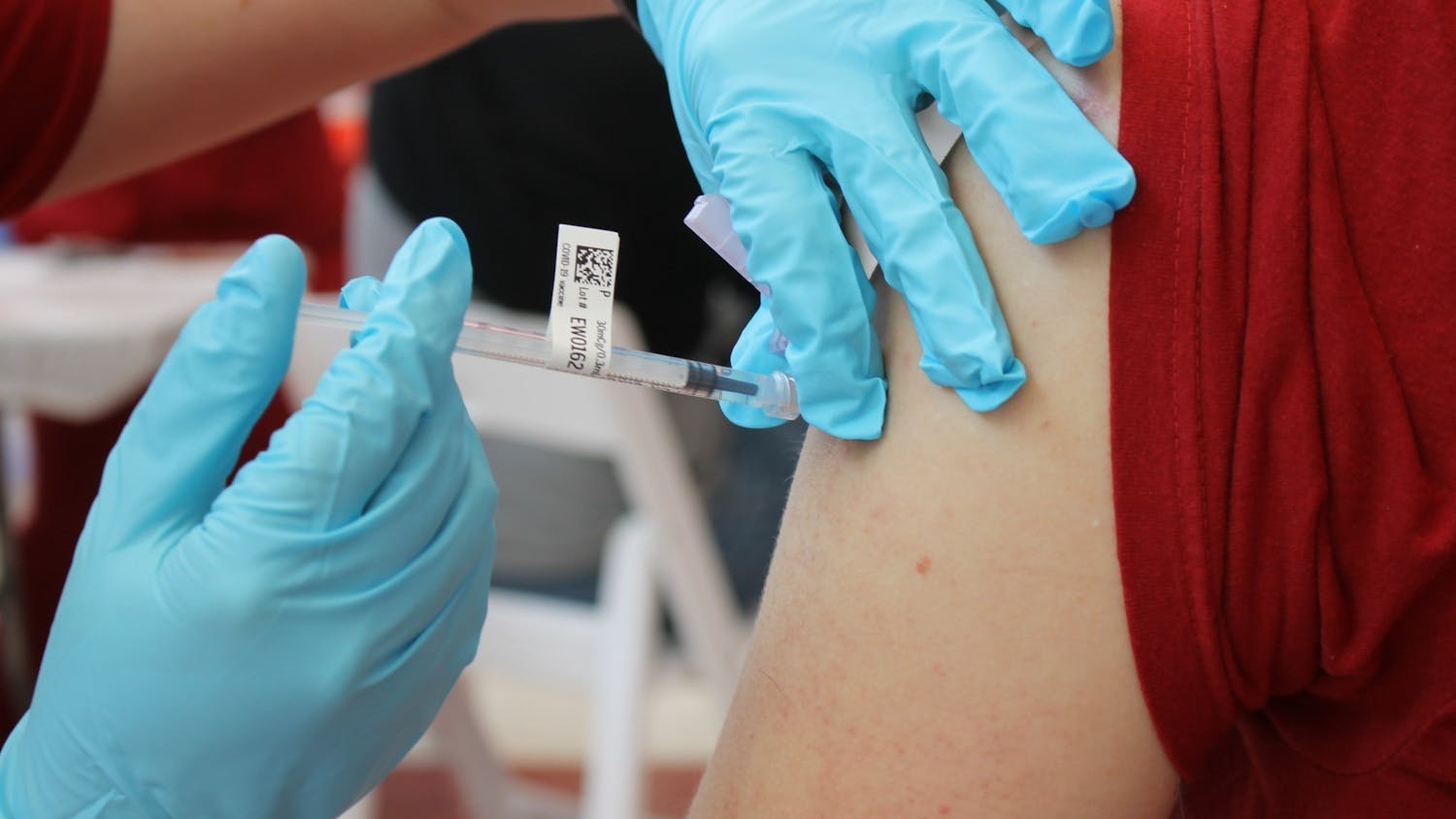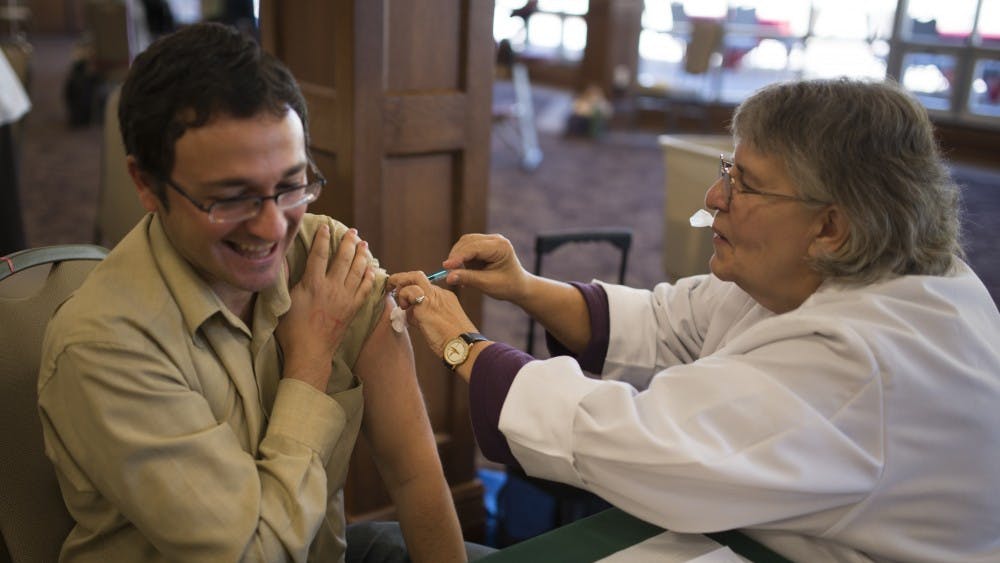Besides abstinence and long-term mutually monogamous relationships with uninfected partners, latex condoms are the most effective method for reducing the risk of infection from sexually transmitted infections, unintended pregnancy and HIV/AIDS, according to the Centers for Disease Control and Prevention.\nRegardless of whether or not students are using condoms each time they engage in sexual contact, the question still remains: Are students using condoms correctly?\nIU applied science professor William Yarber said abstinence-only sexuality education often ignores the topic of condom use altogether for middle and high school students. He said teenagers are often never provided clear and detailed instructions on how properly to protect themselves from sexually transmitted infections and unintended pregnancy if they ever do decide to engage in sexual contact as adults.\n"If students take classes about human sexuality in college, their professor or textbook provides a description of how to use a condom safely," Yarber said. "If students are never exposed to correct condom education, they might fumble around when trying to use them and make mistakes that expose them to (STIs) and unintended pregnancy. Sexual penetration is a risky behavior and correct condom use is something a person can do to remain a healthy person."\nBecause most young adults have never received correct condom-use education, some sexually active adults have reported they or their partners have made mistakes while attempting to otherwise protect themselves during sexual contact. According to the U.S. Food and Drug Administration, male latex condoms are about 86 percent effective against \nunintended pregnancy during typical use -- which includes occasional incorrect use -- and about 97 percent effective if used correctly during every act of sexual intercourse.\nIn an exploratory study pertaining to the condom use of 75 rural Hoosier men published in the November issue of "The Health Education Monograph Series" journal, Yarber and his research colleagues discovered many condom use errors and problems related to condom failure as a preventative method of safer-sex behavior. \nOf particular note: The study indicated more than 85 percent of men did not use a new condom after switching between penile-vaginal, anal or oral sexual behaviors during the same episode of contact; more than 80 percent of men did not use a water-based lubricant inside or outside the condom; and more than 70 percent of men did not check the condom for visible damage prior to sexual contact. \nKathryn Brown, a certified health and sex educator from the IU Health Center, said correct condom use also involves knowledge about what a condom is and isn't, the limits of condom protection and the signs and symptoms of common sexually transmitted infections.\n"A condom is a physical barrier, a sheath, a man puts over his penis to stop ejaculation and sperm. The problem is with STIs. It's not rocket science, although certain infections like HPV (or human papillomavirus) can still be transmitted in ways the condom doesn't always protect against," she said. "Condoms provide a reduced risk but there are no 100 percent guarantees against sexually transmitted infections."\nBrown said people can transmit infections inadvertently.\n"They don't have any symptoms, so they don't know they're infected," she said. "Sexual health involves more than trust. Sexual health also means a person needs to be tested for STIs." \nYarber said the research results are similar to those reported among college-age samples during a 2001 study, "Condom Use Errors and Problems Among College Men," from the Rural Center for AIDS/STD Prevention and the Kinsey Institute. In that particular survey, 40 percent of college-age men reported not leaving a space at the tip of the condom, 30 percent said they placed the condom inside out and had to flip it over before use and 15 percent took a condom off before sexual contact was finished.\nOther findings from the survey included four out of 10 college men stated they did not put a condom on before starting any sexual contact, about two out of 10 said they used a nonlubricated condom and about 13 percent said the condom slipped off while withdrawing the penis. More than 40 percent of men also indicated they wanted to use a condom but did not have one available at the time of sexual contact, and about 60 percent of men reported they did not discuss condom use with their partner before engaging in sexual contact.\nBrown said communication about condom use also includes learning about sexually transmitted infections and knowledge of the risks associated with all sexual contact. \nHPV, she said, is so prevalent for women, most sexually active students are at risk for infection even if condoms are used correctly every time. \n"If students are going to engage in sexual contact I say, 'Please do it in the context of caring, trusting relationship where you can talk about condom use with your partner.' Always think in the back of your mind, 'What if I give my partner an STI?' Condoms will help reduce that risk," Brown said. "But even with trust and communication you are still at risk for infection, so don't go around blaming your partner because they might not have known they were infected."\nYarber said a different study about condom-use errors among women revealed more than 60 percent of women are responsible for putting condoms on their partner before sexual contact, although about one-third of that group does so each time. As a result, he said, the "opening line" about condom use is often up to the woman.\nBrown recommended students scatter safe sex pamphlets from the IU Health Center onto the living room table as a possible method to instigate condom use conversation between partners. When a partner asks "What are these?" she said the other partner can say something like, "I picked up those when I grabbed some free condoms from the health center. I had no idea herpes in males often results in atypical symptoms. Have you ever been tested?" \n"A student could then say: 'I really appreciate that you let me know I have nothing to worry about, and I'm not blaming you, but I read somewhere we could be infected and not even know it because condoms don't always block everything and there aren't tests for everything," she continued. "'It's not you, it's me, and I just want both of us to be safer than sorry.'"\nIf a student discovers he or she has any number of STIs after being tested, both Yarber and Brown said his or her partner should try to normalize the situation because he or she is not alone. A student's health care provider can discuss possible treatments, they said, and most, but not all, STIs are curable so future protected sexual contact can occur without infecting the other partner.\nFor correct condom application, Yarber recommended students use only latex or polyurethane protective barriers; use a new condom for each different sexual behavior; not use teeth or fingernails when opening the condom wrapper; visibly inspect the condom for damage before use; leave an empty space at the end of the condom to collect the semen; remove any air remaining in the tip of the condom before use by gently pressing the air out; use water-based lubricants like KY Jelly and not oil-based like Vaseline; put the condom on after the penis is erect and before the penis touches the partner; and carefully withdraw the condom-covered penis after ejaculation but while it is still erect. \nHe further suggested either partner should hold the rim of the condom as the penis is withdrawn so the condom does not slip, that students should never reuse condoms and that students should seek a health care provider if the condom slips off or breaks.
It's a lot harder than you think
Study shows many Hoosiers report condom errors, putting couples at risk for STIs and unintended pregnancy
Get stories like this in your inbox
Subscribe





